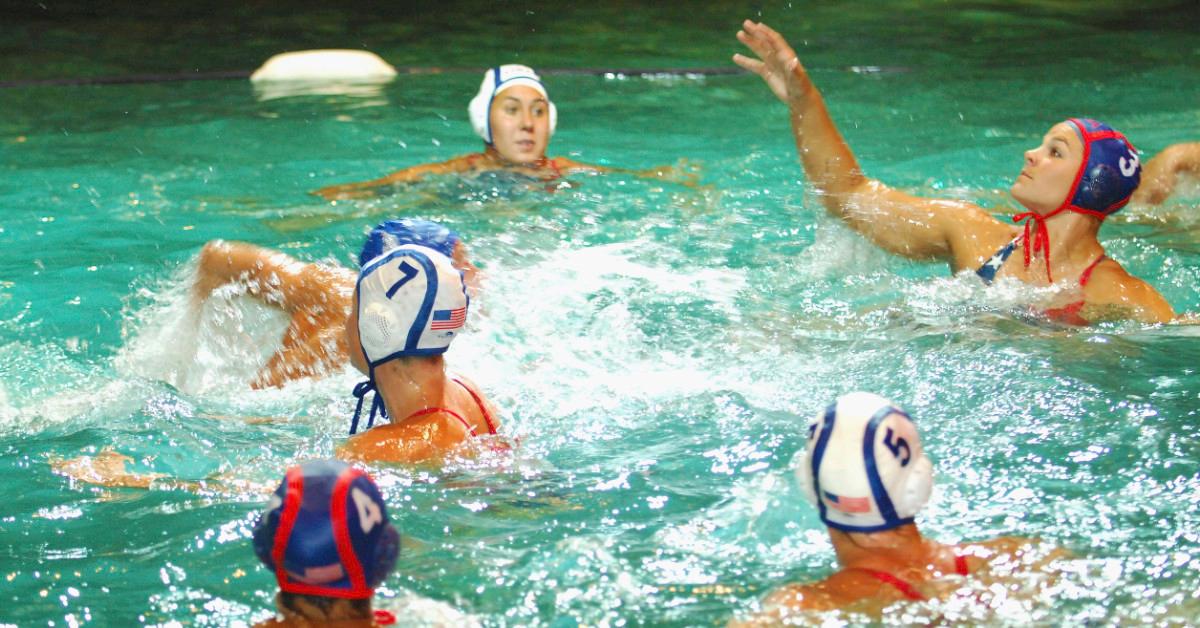Those Funny-Looking Water Polo Caps Serve an Important Purpose
Published July 31 2021, 2:20 p.m. ET

You can understand why Olympic swimmers wear swim caps: The caps help protect swimmers’ hair from chlorine, and they make swimmers more hydrodynamic.
But what’s with the caps in water polo?
Well, water polo players wear safety caps with padded ear protectors because the sport can get intense, and an ear injury would bring their Olympic dreams to an early end. Read on, polo buffs…
The caps help prevent ruptured eardrums.

In a post for The Playbook — the official blog of New York City’s Hospital for Special Surgery — sports medicine physician David A. Wang, MD, told readers why water polo players wear the special caps, explaining that the players are “at risk of a ruptured eardrum if the ear is struck.”
Ruptured ear drops typically heal on their own, but not quickly enough for water polo players to return to the pool in the same game. “Given the possible damage to the inner ear from water, the athlete will often have to remain out of the pool until healing occurs,” Dr. Wang wrote.
Water polo players can suffer other acute injuries, too.
From the sound of it, water polo can be a painful sport to play. Dr. Wang detailed “the many different acute injuries that put water polo players at risk.”
“Acute injuries are often the result of contact with an opposing player, with the head and upper extremities being the most common areas injured,” he blogged. “Water polo players are also at risk for many different overuse injuries given that the sport is played in the water, which provides unique biomechanical challenges to the body, especially the upper extremities and knees.”
For example, water polo players suffer acute injuries to the hand and fingers — sometimes dislocations or fractures, even — when they try to block shots or when opponents try to steal the ball.
Water polo players also suffer eye injuries, anything from irritation to lacerations, abrasions, and fractures.
Water polo also puts strain on the upper and lower body.
Then there’s the wear and tear that water polo players’ bodies endure. For starters, the repetitive motions of throwing the ball while treading water puts “a lot of stress” on one’s upper extremities, Dr. Wang wrote. That stress can lead to injuries such has “bursitis or tendinopathy of the rotator cuff muscles, tendonitis of the biceps, shoulder impingement, and elbow ligament, cartilage, and impingement injuries,” he added.
Meanwhile, the act of treading water impacts the muscles of the thigh and the knee, and this “egg-beater” kicking motion can lead to “muscle strains and tendon injuries, patellofemoral pain syndrome, and knee ligament and meniscus injuries,” Dr. Wang told readers.
Water polo caps also help differentiate the teams.
In a PopSugar explainer, former high school water polo player Emily Weaver pointed out another practical reason why caps are worn during water polo. “The safety cap also acts as a player’s jersey, displaying both their team name and number,” she wrote. “This is not only beneficial for those outside of the pool like the referee and coaches, but for the players, too, because the majority of the time, your teammates’ bodies are submerged underwater.”